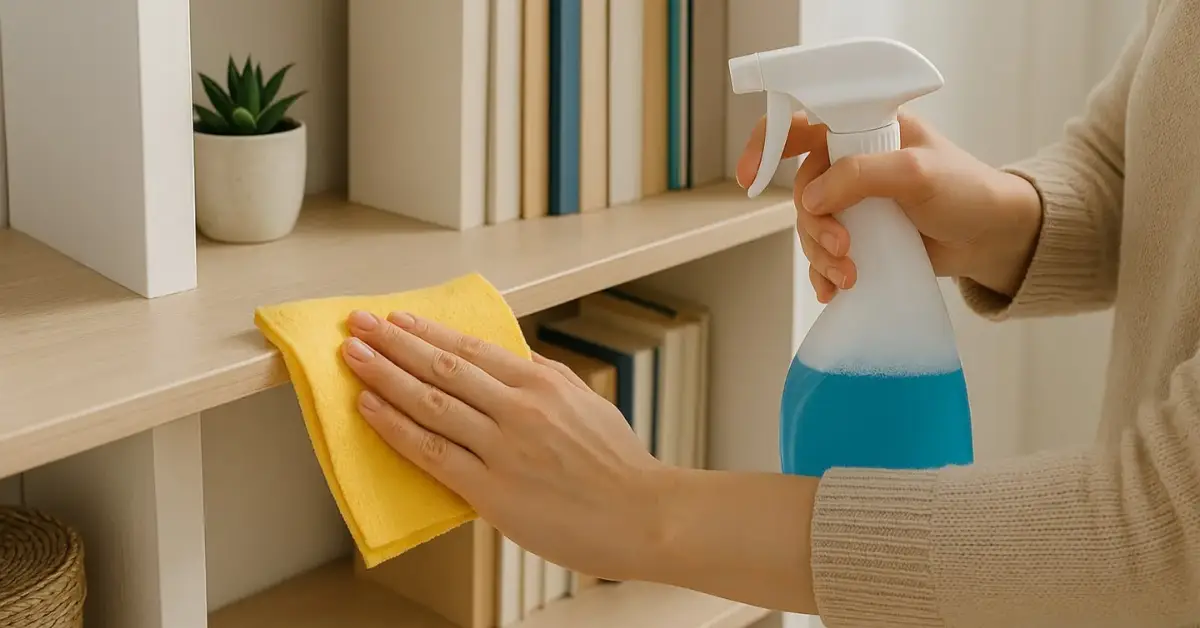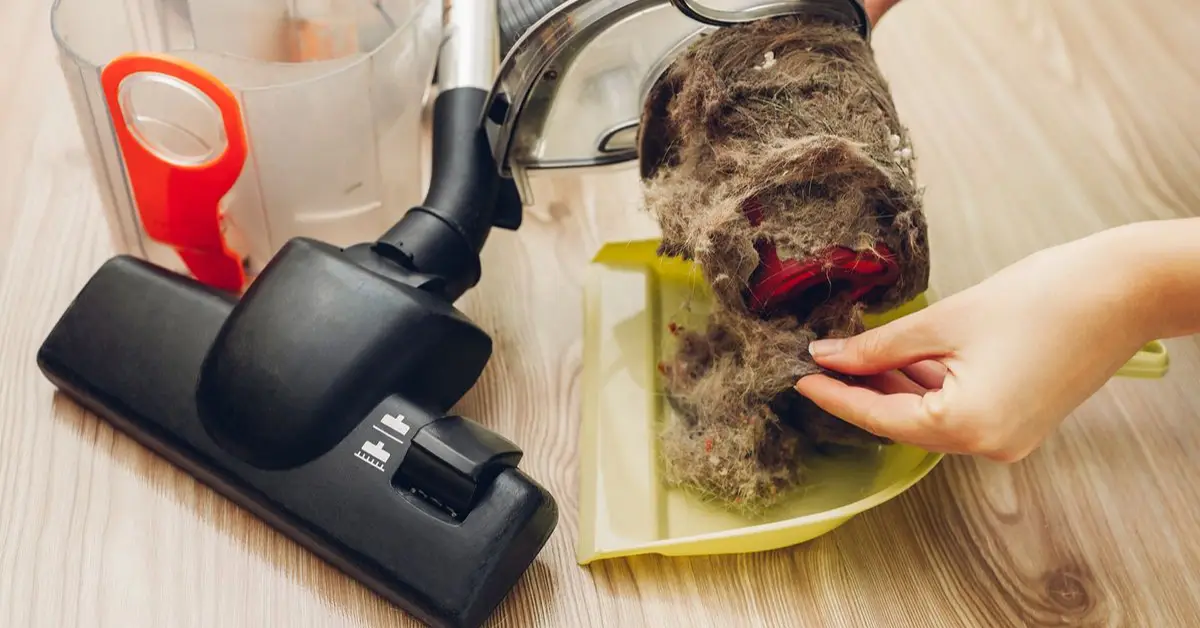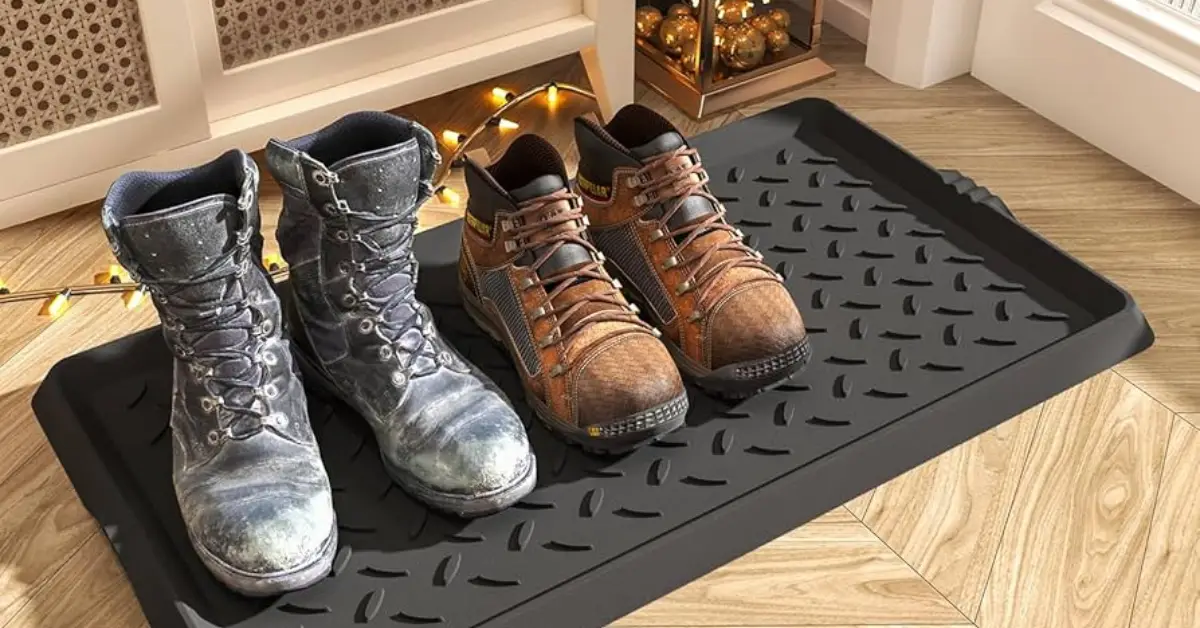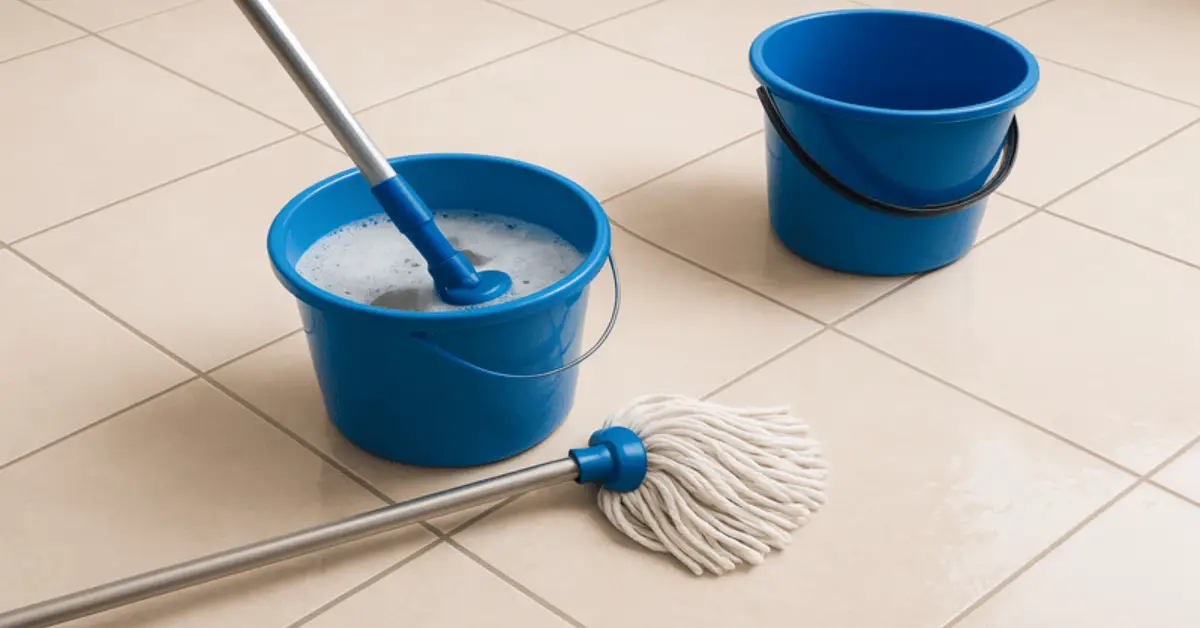10 Hidden Causes of a Dusty Home (and Easy Fixes You’ll Wish You Knew Sooner)
Every morning, I’d wipe down the counters, vacuum the floors, and still — by evening — that faint gray film would settle right back. Sound familiar? You clean every day, yet your home never feels truly clean. The sunlight hits the furniture, and there it is again — a thin layer of dust mocking all your effort.
You’re not imagining it. Even spotless homes can have invisible forces working against them — from leaky vents to microfibers shedding off clothes and furniture. Most people blame pets or open windows, but the real causes are often buried in places you wouldn’t expect. And unless you fix those, the dust will keep returning no matter how much you clean.
I’ve spent years studying indoor air quality, talking with HVAC experts, and testing what actually works inside real homes. In this guide, I’ll show you the hidden reasons your house stays dusty — and the practical ways to break the cycle for good.
Before you dive in, think about this: if you could eliminate just one of those invisible culprits this week, which part of your home would you start with?
Let’s be honest — most of us think of dust as just “dirt in the air.” But when you actually look closer, it’s far more complex (and unsettling). I learned this the hard way after testing indoor dust samples from my own living room — what showed up under analysis was shocking.
What Dust Really Is (And What It Carries)
The composition of household dust (skin cells, fibers, pollen, mites, microplastics, heavy metals)
Every speck of dust in your home tells a story. It’s a mix of tiny fragments from the world around you — and from you.
Here’s what typically hides inside that fine gray film:
- Dead skin cells and hair — The biggest source in most homes, especially bedrooms.
- Fabric fibers — From your clothes, rugs, and upholstered furniture.
- Pollen and soil — Carried in from outdoors every time you open a door or window.
- Dust mites and their droppings — Invisible but powerful allergy triggers.
- Microplastics — Released from synthetic textiles and packaging.
- Heavy metals — Traces of lead, cadmium, and arsenic that settle indoors over time.
A study published by the American Chemical Society found that indoor dust often contains measurable levels of these heavy metals — especially in urban homes where outdoor pollution seeps inside. It’s not about scaring you, but about understanding that dust isn’t harmless fluff — it’s a cocktail of materials that can affect both cleanliness and health.
Dust as a vector: what toxins and pollutants hitch a ride
Now here’s the part most people never think about: dust isn’t just made of particles — it’s also a carrier. Every speck can latch onto chemicals floating in the air and deposit them onto your floors, shelves, and bedding.
Common hitchhikers include:
- Endocrine disruptors from cleaning sprays, candles, and plastics
- Pesticide residues that sneak in from outdoors
- Flame retardants from electronics and furniture foam
So even when your home looks clean, that invisible layer can quietly release these compounds back into the air. Once you realize this, “just wiping” stops feeling like enough — and you start thinking about air circulation, filtration, and materials more seriously.
Why some dust resists your efforts (resuspension, particle size, adhesion)
If you’ve ever cleaned a surface only to see dust floating back minutes later, you’ve experienced resuspension — when disturbed particles get kicked back into the air instead of being captured. The smaller the particle, the longer it stays airborne.
Here’s what makes certain dust harder to fight:
- Particle size — Ultra-fine particles can float for hours before settling.
- Static charge — Dry air makes dust cling to screens and surfaces.
- Air turbulence — Fans, vents, and even walking across a room stir up settled dust.
So before we jump into the “10 hidden causes,” remember: dust isn’t the enemy — misunderstanding it is. Once you know what it’s really made of, you can finally fight it smarter.
10 Hidden Sources That Keep Dust Circling (Surprising Triggers)

You might be cleaning all the right places — yet missing the real culprits that keep the dust cycle alive. Most of them aren’t obvious at all. Let’s break down the hidden sources that quietly undo your hard work and how to test or fix each one before it drives you crazy again.
1. Leaky or poorly sealed HVAC return vents and ductwork
If your HVAC system isn’t sealed properly, it can pull in dust straight from your attic or crawl spaces. You won’t see it happening, but you’ll feel it — a constant, fine layer of dust no matter how often you clean.
How to detect it:
- Place a tissue near a return vent; if it flutters, air is leaking where it shouldn’t.
- Check for black streaks or dust rings around vents — clear signs of suction leaks.
How to fix: Seal gaps with foil tape or caulk and schedule a professional duct pressure test.
2. Overly high or low humidity
When your indoor humidity swings too far in either direction, dust behaves differently — and not in your favor. Too dry and static electricity keeps it clinging to every surface; too humid and it clumps, creating perfect conditions for dust mites to thrive.
How to detect it:
- Use a simple hygrometer. Readings below 35 % or above 60 % mean trouble.
- Notice more static shocks or clingy fabrics? Air’s too dry.
Fix it: Keep relative humidity between 40–55 %, using a dehumidifier in summer and a humidifier in winter.
3. Microfiber shedding and ultra-fine fabrics
Those soft blankets and modern activewear may feel great, but they’re constant dust generators. Every wash, dry, and fold releases tiny microfibers that drift through your home.
How to detect it:
- Look for a fine gray film on nearby shelves near your laundry area.
- Shine a flashlight through the air — floating threads will show.
Fix it: Wash synthetics with a lint filter bag, use dryer filters, and swap a few microfiber items for cotton or linen.
4. Construction or renovation dust — even from neighbors
Fine drywall or cement dust can travel farther than you think. If there’s renovation nearby, your open vents and gaps can pull that grit inside.
How to detect it:
- Notice more fine white or tan dust on window sills or vents after nearby work? That’s construction residue.
- Check exterior window frames for chalky buildup.
Fix it: Seal windows temporarily with painter’s tape and run an air purifier on high during heavy construction periods.
5. Toilet paper “micro dust” and paper product shedding
Here’s one few people expect — your toilet paper and tissue boxes might be creating their own mini dust storms. Each sheet you tear releases micro-fibers into the air, especially in small bathrooms.
How to detect it:
- Wipe a dark surface near the toilet; notice fine white fuzz? That’s paper dust.
Fix it: Switch to smoother, less fibrous paper and close the lid before flushing to limit airflow movement.
6. Outdoor dust intrusion (soil, road dust, vehicles)
Roughly two-thirds of the dust in your home actually comes from outside — tracked in on shoes, carried by wind, or pulled in through cracks. A report on the Constellation Blog highlights just how much outdoor soil and pollution make their way inside:
How to detect it:
- Look for darker dust lines near doors or window sills facing the street.
- Notice cleaner air in upper floors than near entryways? Outdoor dust is the likely cause.
Fix it: Add heavy-duty entry mats, enforce a no-shoes rule, and check window seals every season.
7. Pets and insect debris
It’s not just fur — pets shed dander, and even insect fragments from dead bugs can make up a surprising portion of household dust.
How to detect it:
- Run your finger along baseboards or behind furniture — gritty residue could include insect matter.
- If you have pets, notice light-colored dust collecting faster near their favorite spots.
Fix it: Groom pets regularly, vacuum pet areas daily, and seal entry points where bugs sneak in.
8. Your cleaning tools and habits backfire

Ironically, some cleaning routines make the problem worse. Vacuums without HEPA filters or feather dusters simply scatter particles back into the air.
How to detect it:
- Notice a “musty” smell after vacuuming? That’s recirculated dust.
- Watch light beams while dusting — if particles fly around, your tools are redistributing.
Fix it: Use a vacuum with HEPA filtration, switch to damp microfiber cloths, and clean your tools after every use. Still wondering why dust keeps coming back even after cleaning? You’ll find a few everyday mistakes that make it worse in Say Goodbye to Dust: 8 Everyday Habits for a Cleaner Home.
9. Decorative clutter and open shelves
Every object in your home is a dust magnet. Open shelving, picture frames, and piles of decor trap air and slow down circulation, letting particles settle.
How to detect it:
- Compare an open shelf to a closed cabinet after a week — you’ll see the difference.
Fix it: Simplify displays, store items in cabinets, and dust higher surfaces first so particles fall where you can capture them.
10. Poor airflow and stagnant zones
Closed doors, blocked vents, and still corners let dust settle undisturbed — until you walk through and stir it up again.
How to detect it:
- Check unused rooms or corners — a quick wipe will show thicker dust buildup.
- Hold a tissue near vents to see if air movement is weak.
Fix it: Keep doors open where possible, run ceiling fans on low, and make sure every vent is free of obstruction.
Once you identify which of these culprits matches your home, you’ll notice the difference fast. Start with one — fix it this week — and you’ll cut your dust by more than you’d think possible.
Diagnosing Your Dust Problem — Practical Audit You Can Do Today
Before you throw another weekend into deep cleaning, pause and audit. Every home has a pattern — a rhythm of dust movement tied to airflow, humidity, and unseen leaks. This section helps you find your pattern fast.
Quick checklist (rooms, filter, HVAC, exterior)
Start here: Do a 10-minute scan with a notepad or phone.
- Which rooms get dusty first? (Usually those near HVAC returns or street-facing walls.)
- Are your filters clean or overdue?
- Any visible streaks or dark rings around vents?
- Drafts near windows or baseboards?
Mark what stands out — these clues tell you where the real leak or imbalance lives. While you’re checking for airflow or drafts, take a look at 5 Affordable Draft-Proofing Hacks for Doors That Look Good & Work Well. Even sealing one drafty door can drastically cut down on dust transfer between rooms.
Use your phone: take photos at night under light to see floating dust

Turn off the lights, switch on your phone flashlight, and aim it sideways across a room. You’ll catch a glowing “snowfall” of particles.
Why this works: The beam reveals how much dust is hanging in midair versus what’s already settled. You’ll instantly see which rooms have the worst particle load.
Measure relative humidity, use dust sensor monitors
Humidity shapes how dust behaves. If your air is too dry, particles float endlessly; too humid, and they clump into sticky residue.
Tools to try:
- A digital hygrometer for instant humidity readings (aim for 40–55%).
- Dust monitors like Awair or AirVisual for tracking PM2.5 and PM10 levels.
- If numbers spike when you cook, vacuum, or turn on the HVAC — you’ve found your dust trigger.
According to a Nature study on indoor particulate fluctuations, these micro-dust levels change hourly based on temperature, ventilation, and even light exposure — meaning your environment, not your habits, might be the real cause.
Interview your vents: tape test, smoke pencil, return leak test
Your vents may be quietly working against you. Small gaps pull in attic dust and insulation fibers.
Quick DIY tests:
- Tape test: Seal vent seams with painter’s tape for a few days — if dust lessens, that’s your leak.
- Smoke pencil test: Hold a thin stream of incense near the vent; if it pulls in sharply, you’re sucking air from behind the wall.
- Return leak test: Remove the filter and check suction with a tissue. Excess pull means your returns are overworking or leaking.
Even a minor leak can make a spotless home look dusty overnight.
Deep Fixes: How to Actually Break the Cycle
Once you’ve mapped your dust pattern, it’s time to go beyond surface cleaning. These are the moves that create lasting results.
Upgrading to high-MERV or HEPA-grade filters (and compatibility)
- Choose MERV 11–13 for whole-home systems; HEPA for portable purifiers.
- Change filters every 60–90 days.
- Check airflow compatibility before upgrading — overly tight filters can strain older systems.
Duct sealing & professional cleaning (when / how often)
Leaky ducts are invisible dust highways.
- Have them pressure-tested every 2–3 years.
- Schedule cleaning after construction or pest issues.
- Ask for aerosol-based sealing (it reaches micro gaps regular tape can’t).
Zone air purification & UV ionization (pros & cons)
Pros: Continuous filtration, odor reduction, allergen relief.
Cons: Higher maintenance and upfront cost.
Use UV ionizers only from certified, low-ozone models for safety.
Smart cleaning routines (frequency & sequence: top→bottom)
Always clean from high to low: ceiling → shelves → surfaces → floors. Finish each session by running an air purifier on high for 15 minutes.
Textiles strategy: rotating, laundering, material swap
- Wash bedding weekly, curtains monthly.
- Opt for tightly woven fabrics.
- Retire synthetic throws and low-quality rugs that shed microfibers.
Entry management: air boot rooms, rub mats, change clothes

- Use heavy-duty mats inside/outside each entry.
- Keep a small rack or cubby for shoes and outerwear.
- Wipe pet paws before they come in — huge difference in tracked dust.
Use of humidity control + ventilation adjustments
Balanced air = stable dust.
- Maintain 40–55 % humidity.
- Run exhaust fans post-shower/cooking.
- Keep interior doors slightly ajar to even out airflow.
What to Expect — Realistic Dust Levels & Maintenance Plan
Even after fixing the big issues, dust will never hit zero — and that’s okay. The goal is manageable, not militant.
Ideal vs typical dust accumulation benchmarks
- Normal: light film in 3–5 days.
- Improved: 7–10 days post-duct sealing and HEPA filtration.
- Persistent: if surfaces gray within 24 hours, suspect HVAC leaks or poor filtration.
Monthly / quarterly maintenance schedule
Monthly: replace filters, vacuum vents, wipe electronics.
Quarterly: wash curtains, check window seals, calibrate purifiers.
Small, regular efforts beat occasional marathons.
When to call professionals (HVAC, duct, IAQ)
If you notice gray streaks around vents, humidity swings, or chronic sneezing indoors — it’s time for an indoor air-quality test. Experts can track real particle counts and pinpoint exact leak points. If your inspection uncovers cold spots or unexpected airflow paths, check out 10 Sneaky Places Cold Drafts Hide in Your Home (and How to Stop Them Fast). You’ll be surprised how many of those hidden gaps also feed recurring dust.
Tools & plug-and-play devices worth adding
- Smart purifiers (auto-adjusts to dust levels)
- PM2.5 sensors (live monitoring)
- HEPA vacuums (fine particle trapping)
- Dehumidifiers with air filters (dual function)
Once you understand why your dust behaves the way it does, every cleaning minute starts to work smarter — not harder.
Health Toll & Why You Should Care More Than Cleanliness
Most people clean for looks — but the real issue with dust isn’t cosmetic. It’s chemical. What settles on your shelves also settles in your lungs.
Allergies, asthma, lung impact from dust & particles
If your house feels “stuffy” even after a deep clean, that’s not your imagination. Fine dust particles (PM2.5 and smaller) linger in the air long enough to irritate your lungs and trigger allergic reactions. Studies show they can worsen asthma symptoms and long-term respiratory inflammation.
Simple test: if you wake up with a dry throat or sneeze after making the bed — your bedroom dust is likely to blame.
A well-sealed HVAC and HEPA purifier aren’t just comfort upgrades — they’re long-term health insurance.
Exposure to SVOCs, flame retardants, heavy metals in dust
Modern household dust isn’t just made of skin cells or lint — it’s a chemical cocktail. Common flame retardants, plasticizers (SVOCs), and even heavy metals accumulate in indoor dust from electronics, flooring, and furnishings.
Children, pets, and anyone spending hours indoors are at higher risk because they breathe and ingest more of it. Reducing dust means reducing your daily exposure to these silent toxins — not just keeping things tidy.
Psychological / perception factor — feeling “unclean” even after cleaning
There’s also a mental side to dust. When you constantly see it returning, your brain equates it with failure — which leads to stress and fatigue. Researchers in environmental psychology note that clutter and visible dust raise cortisol levels, even when you don’t consciously notice it.
So yes, dust is physical — but it’s also emotional. Controlling it gives you back both clean air and peace of mind.
Pitfalls Many People Make (And How to Avoid Them)
Even diligent homeowners fall into a few easy traps. The difference between a dusty house and a fresh one usually comes down to timing, habits, and airflow.
Cleaning top → bottom vs random order

Cleaning out of sequence is like mopping before sweeping. Dust always falls downward — so wiping lower surfaces first guarantees double work.
Fix: Always start high (fans, shelves, blinds), then work down. Vacuum last.
Using fans / HVAC at wrong times
Turning on ceiling fans or HVAC while dusting is a classic mistake. It throws every loose particle back into circulation.
Fix: Keep fans off while cleaning, then run your purifier afterward to trap what’s airborne.
Skipping filter changes or buying cheap filters
A $2 filter may catch hair, but not the particles that actually matter. Once it clogs, your system pushes unfiltered air right back into your home.
Fix: Upgrade to MERV 11–13 filters and replace them on schedule — set reminders in your phone or your monthly tracker.
Overopening windows during high pollen or dust days
Fresh air is great — unless it’s full of pollen or street dust. Many homes get dirtier from “ventilating” on bad days.
Fix: Check your local AQI before opening windows. On high-dust or pollen days, keep them shut and rely on filtered air exchange.
Ignoring hidden zones (attics, crawlspaces, returns)
Dust builds silently in unused or hidden zones. Leaky attics, basement returns, or neglected crawlspaces can feed the rest of the house with unfiltered particles.
Fix: Inspect these once a year. If insulation looks gray or vents have buildup, seal and vacuum professionally.
Bonus: Dust-Battle Checklist & Monthly Tracker
Want to make your results last? Track them. A one-page checklist keeps you accountable and helps spot early warning signs before dust spirals again.
What to include:
- Room-by-room inspection column
- Filter replacement log
- Humidity & particle level notes
- “Skipped this month” tracker
Closing Thoughts & Reader Next Steps
You’ve now seen how much dust control depends on science, not just scrubbing. The fixes you make today — sealing a vent, changing a filter, balancing humidity — build up to cleaner air, calmer energy, and a healthier home over time.
So here’s my challenge to you: Start a 30-day Dust Reset. Pick just one hidden source from this guide — maybe your ducts, your fabrics, or your vents — and fix it this week. Then track the change for 30 days.
You’ll be shocked how different your air feels.
If you try it, share your progress in the comments or tag Build Like New on social — I’d love to feature your story in our next home-health article.
Ready to make your home feel build-like-new again? Visit Build Like New for smart home guides, product picks, and expert air-quality advice built for real homes, not showrooms.
Disclaimer: This article is for general informational purposes only and is not a substitute for professional HVAC, medical, or environmental advice. Always consult qualified experts before making major air-quality, filtration, or home system changes. Build Like New is not responsible for outcomes based on independent implementation.


